Historical Timeline
1890s 1900s 1910s 1920s 1930s 1940s 1950s 1960s 1970s 1980s 1990s 2000s 2010s 2020s
1893: After more than a year of planning by the Western Advent Christian Publication Association, Mendota Seminary opened on January 9 in Mendota, Illinois. Just six months later, the name was changed to Mendota College. Mendota College departments were Preparatory, Academical, Musical, Art and Bible Training, and Commercial (stenography and typewriting). Bible Training courses were initially designed for ministers, with a goal of enriching both their pastoral and professional efforts. The seminary opened with three students and grew to 31 students at the end of Winter Term. J. Oscar Campbell served as the first president of the institution.

1894: Advent Christian women created the Helper’s Union, an organization designed to contribute food, linens, rugs, furniture, and funds for decorating as needed. The group was also influential in raising funds for Mendota College’s Bible Training Department.
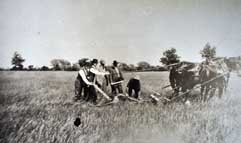
1899: Mendota College received its own charter after broadening its programs into a traditional liberal arts curriculum.
1900: Mendota College played its first football game against East Side High School in Mendota, Illinois.
1911: Under President Orrin Roe Jenks, the groundbreaking for a new campus in Aurora took place on May 31. The move was mutually beneficial: citizens of Aurora desired a college to enrich the culture and stature of the city, and college administrators sought to relocate to a more populated area. The institution changed its name and formally incorporated as Aurora College in October.
1912: Classes at Aurora College began on April 4. The campus consisted of Eckhart Hall (classrooms). It was the only building that was fully functioning at that time; Wilkinson Hall (men’s dorm) and Davis Hall (women’s dorm) were completed soon after. The Tin Can Jimmie Club was formed to raise funds for the college endowment.

1912: The Aurora College seal was designed by B.J. Dean, president of Mendota College, and used for the first time on the college catalog issued in 1910. When the college moved to Aurora in 1912 the wording on the seal was changed to the present form. The book, scroll, and torch, which appear in the seal, symbolize the meaning of the Latin inscription which translates to, “The wise man treasures knowledge.”
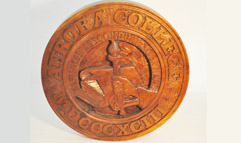
1913: The men’s basketball team completed its first season with a final record of eight wins and four losses.
1922: The first constitution of the Students’ Association of Aurora College was written. It established a Finance Committee, an Athletics Committee, and a Committee on Societies.
1929: The football team was the first to be called the Spartans in fall 1929. They played on Patterson Field, which was built by students five years earlier. The first Spartans had a season record of four wins and three losses.

1930: The Illinois Department of Public Instruction authorized Aurora College to train elementary and secondary school teachers, marking the beginning of one of the institution’s most successful and longest-standing academic programs.
1947: In an effort to serve veterans returning from World War II, Aurora College introduced an innovative evening program. The flexible schedules allowed former soldiers to earn a college degree while working full-time jobs.
1955–1957: Campus facilities took a major step forward with the construction of the addition to Davis and Memorial Halls, both of which were dedicated on December 3, 1955. This was soon followed by the construction and dedication of Jenks Hall in 1957. These new spaces allowed the university to meet the growing demand for on-campus housing.

1959: A new home for baseball, Snell Field, was dedicated in memory of Coach Percy Snell, the first coach hired by Aurora College. Snell had been the sole coach for all Athletics programs for many years. The field hosted baseball games on the southwest corner of campus for nearly 50 years.
1962: Academic offerings were enriched with the opening of the Stephens Hall of Science and the Charles B. Phillips Library.

1967: A Carillon System was purchased, thanks to a generous gift from Kentucky Fried Chicken founder Col. Harland Sanders.
1970: Two new buildings were dedicated: Watkins Hall, a residence hall, and Alumni Hall, which served as the home for the college’s Athletics programs. Alumni Hall replaced the long-standing Quonset huts that had been used as the gymnasium.

1972: The last bachelor’s degree in theology was awarded, reflecting Aurora College’s independence from any particular religious denomination. Faith and service programs continued to flourish at the college.
1978: The women’s basketball team completed its first season.
Recognizing the importance of the arts, the college opened Perry Theatre adjacent to Stephens Hall.
1981: Two building additions were made: a new dining facility was attached to Alumni Hall, and a new laboratory wing was added to Stephens Hall.

1982: Aurora College joined the NCAA. Since that time, the Spartans have appeared in more than 150 NCAA Division III tournaments.
1985: After decades of growth and expansion of academic programs, the institution changed its name from Aurora College to Aurora University.
Graduate programs in Education and Business were offered.
1986: George Williams College, located in Downers Grove, Illinois, closed its doors and transferred its Social Work and LERA (Leisure and Recreation Administration) programs to Aurora University.
The football program was reinstated after a 32-year hiatus.
1989: Dunham Hall, which was funded by the largest single donation in the history of the school, from Martha (Dunham) Schingoethe, was dedicated.
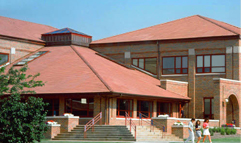
1990: The Schingoethe Center for Native American Cultures, which houses the Schingoethe collection of more than 6,000 pieces of Native American arts, artifacts, and related materials, opened.
1992: Aurora University entered into an affiliation agreement with George Williams College to continue the legacy of its programs and the YMCA College Camp at the Williams Bay, Wisconsin, location.
2000: Rebecca L. Sherrick, Ph.D., was inaugurated as the 13th president of Aurora University, with a promise to “put students first.”
Aurora University and George Williams College formally merged.
The university launched the Doctor of Education degree, the first doctoral program in the institution’s history.
2001: Music by the Lake, a successful summer performing arts festival from the mid-20th century, was re-established at George Williams College.
The Wackerlin Center for Faith and Action was established, thanks to a generous bequest from Helena Zentmyer Wackerlin, a 1918 alumna of Aurora College. The center engages students in both religious reflection and service to people in need.

2003: Aurora University received a $10 million federal grant to create the Institute for Collaboration.
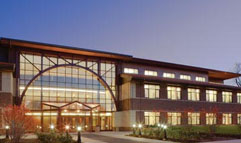
2006: As the university reclaimed its historically strong undergraduate identity, new programs were added in Art, Museum Studies, Religion, Special Education, and Theatre.
The university established the Celebrating Arts and Ideas series, a cultural enrichment program for the enjoyment of Fox River Valley community members.
Aurora University became a charter member of the Northern Athletics Collegiate Conference.
The Roger and Marilyn Parolini Music Center was renovated with the support of a generous gift from alumni Roger and Marilyn Parolini.
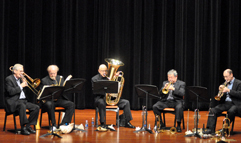
2007: A hallmark of the undergraduate experience, the Crouse Center for Student Success was established to help students make the most of their time at the university.
2008: Vago Field was completed and hosted football and soccer games.
At George Williams College, the new Ferro Pavilion was completed in time for the eighth season of Music by the Lake.
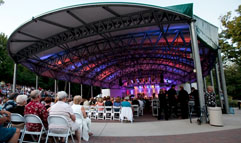
2009: Aurora University began offering graduate courses at the Woodstock Center in Woodstock, Illinois.
The first AU Honors Program students graduated. The program had been established four years earlier to offer opportunities for intellectually curious and highly motivated students to enhance their college experience.
2010: An addition to Alumni Hall was built, providing new, state-of-the-art facilities for the Nursing and Social Work programs.
Academic programs grew as well, with new offerings leading to the Master of Science in Nursing, the Master of Special Education, and the Doctor of Social Work degrees.
In Crimi Auditorium, the new pipe organ, Opus 119, was installed, heralding the importance of the arts at the university.
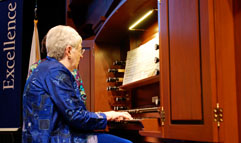
2011: Men’s lacrosse played its first varsity season in the Midwest Lacrosse Conference.
2012: Aurora University celebrated 100 years.
AU Online began offering undergraduate and graduate programs.
A new residence hall, Centennial Hall, located between the Institute for Collaboration and Watkins Hall, welcomed students for the spring semester.

2013: Women’s lacrosse began its first season as an NCAA team, playing in the Midwest Women’s Lacrosse Conference.
2014: The Aurora University Orchard Center — a facility four miles from the Aurora main campus that includes classrooms, a computer lab, a lounge, and both faculty and administrative offices — opened to accommodate demand for the university’s undergraduate, graduate, and adult degree completion programs.
The John C. Dunham STEM Partnership School on the Aurora campus opened, serving third- through eighth-grade students from area school districts.
Men’s hockey made its debut as an NCAA Division III team in the Northern Collegiate Hockey Association. The team played two previous seasons in the American Collegiate Hockey Association.
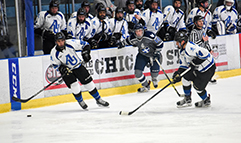
2015: The Hill Welcome Center and Schingoethe Center was built.
Libby’s Place food pantry and Spartan Attic clothes closet opened.
Women’s bowling was added to Spartan Athletics programs.

2016: The Junior Mentoring Program was created to help students identify their career and life goals.
2017: The Smithsonian Institution awards the Schingoethe Center affiliate status.
Construction began on Spartan Athletic Park, an 80-acre facility that includes tournament-quality softball, lacrosse, soccer, and football competition spaces with plans for additional sports facilities.
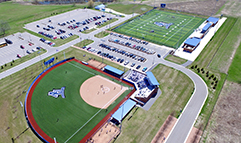
2018: The dining facilities in Alumni Hall were renovated and expanded. The dining hall includes all new kitchen equipment, furniture, flooring, and a new raised patio.
Men’s volleyball and women’s hockey made their debut.
The Ingalls Building, an icon of the George Williams College location since 1925, was transformed into the Chapel.

2019: The first class of MBA and MPA Plus One students graduated, earning their master’s degree in one year following their undergraduate experience.
Students, alumni, faculty, and staff concluded a yearlong celebration in honor of Aurora University’s 125th birthday from the founding of Mendota College.
2020: On-campus parking was vastly improved with the addition of a new 500-space, four-story parking garage.
Students enjoyed new acoustically controlled band and vocal performance spaces in the expanded Roger and Marilyn Parolini Music Center.
2021: Aurora University men’s and women’s wrestling programs began competition.
The Pathways program launched, helping neurodiverse students reach their potential in their studies and in their careers.
The newly constructed Kimberly and James Hill Center for Student Success opened. The center is a place where students receive guidance and inspiration to discover their path in work and life.
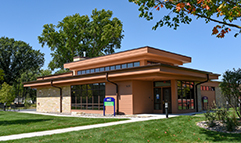
2022: AU received $775,000 in federal funding to create a Center for Immersive Learning at the School of Nursing, bringing advanced technology to nursing labs.
Don and Betty Tucker Hall opens with 70 resident rooms, study spaces, and the Betty Parke Tucker Center for Neurodiversity. The interiors adhere to universal design, ensuring that all spaces are sensory-friendly and serve a wide variety of student needs.
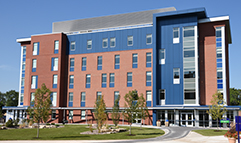
2023: Dr. Rebecca L. Sherrick concluded her tenure as president. She served for 23 years, the second-longest presidential tenure in university history.
Dr. Susana Rivera-Mills was inaugurated as the 14th president of Aurora University and the first Latina to lead AU.
AU received $955,000 in federal funding to provide emerging technologies and new learning experiences for students across all disciplines.
AU sold the Woodstock Center building to McHenry County College and entered an agreement to become the founding partner for MCC’s University Center and continued to offer degree programs in downtown Woodstock, Illinois.
Instruction concluded at the GWC and Orchard Center locations, with GWC's final class graduating in December.
The School of Social Work is renamed the George Williams School of Social Work, honoring the George Williams College legacy of serving those who serve others.
The National Science Foundation awarded Aurora University $1.4 million in funds to help address the nationwide shortage of high-quality teachers in science, technology, engineering, and math, particularly among groups underrepresented in STEM fields. Because of this, AU named its first cohort of Noyce Scholars during the fall semester.
The Aurora University Chorale embarked on its first-ever overseas tour with a trip to Ireland, performing at concert venues and churches across the Emerald Isle.
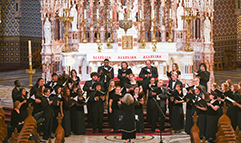
2024: AU was featured by U.S. News & World Report as one of 20 beautiful college campuses across the country.
Science programs were consolidated into John C. Dunham Hall, a newly renovated, high-tech space, featuring open classrooms and state-of-the-art laboratories to enhance experiential learning in the sciences. The building was previously used as the John C. Dunham STEM Partnership School, which concluded programming at the end of the 2022-2023 academic year.
AU launched the Skills Infusion Program, equipping faculty with tools to align course outcomes with NACE career readiness competencies and industry trends.
2025: The first-ever Day of Generosity took place on April 4.
On April 17, the university finalized the sale of the GWC property to Topography Hospitality, a Chicago-based firm known for its thoughtful, sustainable approach to development.
At the end of May, construction began on the Learning Commons. The student-centered facility will bring tutoring, academic support, technology resources, and collaborative study areas together under one roof.